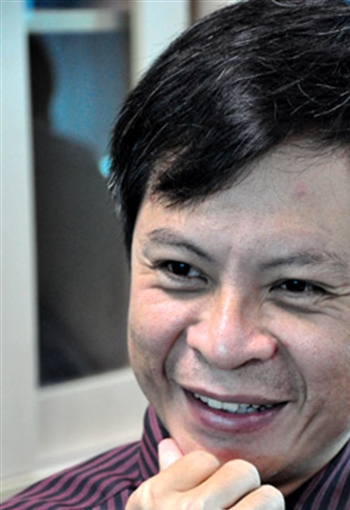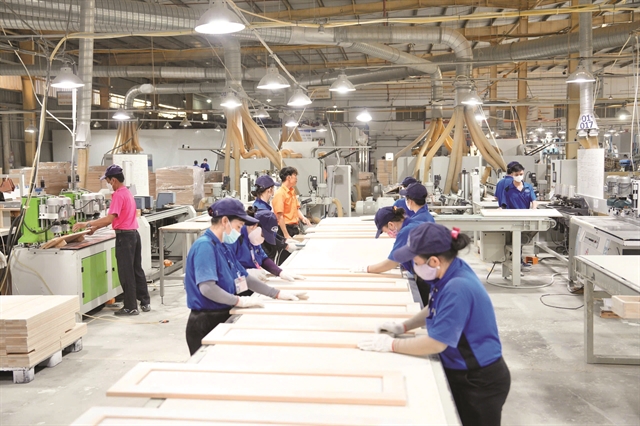 In the Spotlight
In the Spotlight

Last week, a young girl in Đắk Lắk Province in Việt Nam’s Central Highlands had her leg amputated due to onset of caseation after she was treated in a hospital in the province. Thu Vân talks to a representative from the Health Ministry, a doctor and a parent about the case.
 |
| Deputy Minister Nguyễn Viết Tiến |
Last week, a young girl in Đắk Lắk Province in Việt Nam’s Central Highlands had her leg amputated due to onset of caseation after she was treated in a hospital in the province.
According to her family, the district hospital where she was taken following a fracture, cast her leg in plaster. She suffered a lot of pain in her wounded and plastered leg but despite her family’s requests, doctors at the hospital refused to remove the cast. Two days later, when the doctors finally agreed to cut through the cast, they found her leg seriously swollen, with multiple blisters all over her limb.
Even then, the district hospital kept refusing to allow her to be transferred to a bigger hospital in the province. Eventually, when the family finally decided to take her to Đắk Lắk Hospital on their own a day later, her leg had become necrotic. Her leg was amputated at the Chợ Rẫy Hospital in HCM City on March 12, six days after the accident, in order to save her life.
Thu Vân talks to a representative from the Health Ministry, a doctor and a parent about the case.
As a doctor specialised in Traumatology and Orthopaedics, how do you see the incident that happened with the girl?
Tăng Hà Nam Anh, PhD, University of Medicine and Pharmacy HCMC
When a patient has had knee fractures, it’s always essential to check the popliteal vascular. In case of tibial plateau fracture, there’s a high risk of tamponade. So when giving a plaster cast, if a patient develops pain, doctors need to check if there’s a cast tamponade. However, in this case, it’s very difficult for a doctor to say if it’s necessary to cut the cast to check. I myself find it difficult to decide whether I should cut the cast for a new patient with plaster cast, because the patient can’t tell if the pain is being caused by embolism, tamponade or it’s the (usual) pain after a bone fracture.
Complications like those seen in the case of this girl can happen anywhere anytime, not just at healthcare units at lower level. It happens a lot in the world as well. I understand that there will be an inspection into the case. We’ll know the precise reason only then.
Incidents like this have happened before when a patient is treated at a grassroots health unit, say at district or provincial level, and then transferred to a hospital at the central level, but by then, it is often too late to treat. It’s not unreasonable for people to always want to go straight to big hospitals in big cities for treatment. What are the reasons for such medical malpractice?
Nguyễn Việt Tiến, Deputy Minister of Health
It’s true that there are many patients who want to be treated only at hospitals at the central level. This is also the main reason for overload at major hospitals.
However, medical complications can happen anywhere at any hospital of any level. Of course, the possibility of such a thing happening is different at different hospitals.
We need to analyse and study the case and fix responsibility whenever such a medical complication occurs. It can happen due to the following reasons: First, due to the patient’s own physical condition. One might have severe allergies after a particular injection, while others may not have that. The second reason is when a medical condition is beyond a doctor’s capacity. The third reason is late discovery of a complication during treatment. In this case, it may happen due to lack of capacity, or lack of responsibility on the part of the health practitioners. The last one is the lack of equipment, resulting in failure to perform a necessary technique.
When a complication happens, it’s important that proper, objective and serious inspection is carried out to determine the causes.
In the case of the girl from Đắk Lắk, the Ministry of Health has ordered the provincial health department and leaders of the local hospital to find out the reasons.
Nam Anh: It’s true that there are many cases when doctors at grassroots level come up with a false diagnosis, resulting in bad consequences or delay in treatment by the time patients are transferred to a more equipped hospital.
However, what we also need to take into account is that doctors at central-level hospitals have better opportunities for training, updating their knowledge and have better equipment. At lower level hospitals, there are usually lesser chances of updating knowledge. Also, at times doctors have to work multiple specialities at the same time.
How can we avoid such cases?
Tiến: The Ministry of Health has launched the project 1816, aimed at transferring techniques from central hospitals to grassroots hospitals, and the results have been very positive. Many hospitals at the grassroots level have been able to perform advanced techniques, thus helping reduce the burden cast on central level hospitals.
The ministry also constantly organizes training courses for doctors to enhance their skills.
Nam Anh: I think it’s necessary to quickly reform and improve our medical training. There should be at least six years of training time in general and five years in specialities. A proper criteria for graduates is also essential, irrespective of what degree a student might possess.
We also need to look back at the quality of training that medical schools or medical departments of schools impart. Training courses must be constantly organized, and seriously so, thus ensuring that health practitioners at grassroots level have a fair chance to update their knowledge.
Another important factor is that we have to improve the working conditions of health practitioners. Currently, they face difficulties such as lack of equipment, work overload and low incomes.
Nguyễn Xuân Anh, a parent in Hà Nội
As a parent, I feel angry when I hear about cases such as this one. The girl whose leg was amputated could have been your daughter, or of someone you love. I know it’s early to call this case one of medical malpractice, but you, your family member, or your loved one can be a victim of medical malpractice, even when the medical technique involved is too complicated.
This is not the first case of its kind, and as it happens all too often, I can figure out how it will end. The ministry will carry out an internal investigation. The doctor involved in this case would be removed. The Health Ministry leaders will say it can happen anywhere. And life will go on. The fact is that unless the entire system tries its best to bring about fundamental changes, there is every likelihood for cases like this to happen again and again. And next time, it could be you.
We have to look into the root causes of such problems. How doctors are trained? How to make sure that only qualified professionals can be medical practitioners? Is there any system in place to make each and every single person holding a position accountable?
Medical malpractice can happen anywhere in the world, but then this can become an excuse to be irresponsible. In many places in the world, health leaders and managers take responsibility, even resign for their poor work performance. What we want is not someone being punished or made to resign; we want such heartbreaking incidents to stop happening so that people trust the doctors who they hope can save their lives.
The authorities concerned might say that there are a lot of difficulties in the health sector, that we are a hundred years behind developed countries and that things can’t change overnight. Personally, I believe no doctor ever wants his or her patients to land with a complication or in a bad condition. I also believe no doctor was so heartless as to have pushed this particular girl into a position where she finds herself today. But I do believe that if the doctors in this case had better professional knowledge and skills, things wouldn’t have been this bad.
The question is: how can we ensure that our doctors and nurses are qualified enough to keep cases like these to a minimum? That remains for the health sector to answer. — VNS
 |
| Tăng Hà Nam Anh |




